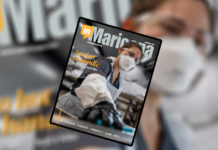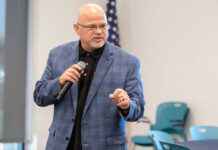
As 2015 arrives we look back at 2014, remembering many of the significant milestones our city has achieved, including the opening of Copper Sky Recreational Sports Complex, many new businesses, new members to the City Council, and much more. Now, we look forward to projects and objectives for 2015.
Over the next year, we will see continued efforts and activity in several key areas consistent with Maricopa’s municipal priorities: economic sustainability, quality of life, transportation, public safety and quality municipal services.
Visioning. The 2040 Visioning process, which began in October 2014, is a citizen-driven, Council-sponsored initiative. Through numerous community forums, citizens identified areas or issues with direct correlation to future growth and quality of life, and creating what Maricopa could look like in 2040. City Council also appointed a citizen-based steering committee, tasked with oversight of the visioning process as well as creating Maricopa’s Visioning document, which will guide Maricopa in the years ahead.
Public Safety. Working closely with the police and fire departments, we will ensure personnel, equipment and training are adequate to meet demands for service. Plans are progressing on the design and construction of a police substation at Copper Sky as well as the design and construction of the Fire Fleet and Public Works building within the Heritage District.
Balanced Budget. In the first quarter of 2015, work begins on the FY15-16 budget along with review of the Capital Improvement Plan (CIP). The CIP review will evaluate project priorities as well as funding capacity for those needs. Revising construction schedules sometimes occurs as a result of this review. Our budget process will be “zero-based,” which means every anticipated expenditure is projected, discussed, prioritized and then fully vetted before being included into the budget.
Transportation. 2014 was a big year for Maricopa. The State Route 347 overpass project was adopted into ADOT’s five-year plan, the draft environmental assessment was completed, and the preferred alignment was made public. The next steps include the implementation of Phase I and Phase II, which involve the design and construction of a relocated Amtrak station, realignment of Maricopa-Casa Grande Highway to Honeycutt Road, and working with ADOT on right-of-way acquisition to ultimately construct the overpass. We will carefully monitor funding options and continue to pursue additional funding sources.
Other transportation projects planned or in progress include widening of northbound SR 347 from Smith-Enke Road to Rancho El Dorado, widening Smith-Enke Road east of Province, widening Honeycutt Road from Porter Road to White & Parker Road and extending Edison Road west to connect with SR 238.
Flood Plain Issues and Mitigation. We will explore options to mitigate flooding as well as removing properties from flood zones due to recent FEMA map revisions. Strategies include participation and assistance from key stakeholders like Pinal County, the Maricopa Flood Control District, FEMA and developers. Mutual goals are to design, identify funding for and ultimately construct solutions. These efforts are crucial to public safety and future economic development.
Economic Development. We will extensively continue to market and promote Maricopa, actively pursue viable leads, and reach out to site selectors. Additionally, we continue to support our business incubator, Maricopa Center for Entrepreneurship, assist local businesses, and increase awareness of the benefits and impact of shopping local to support Maricopa’s economy.
We have several projects in the works as well: Design, construction and leasing of the Estella Gin Business Park “flex-space,” ongoing discussions with hotel developers, and reviewing proposals for retail/commercial development at Copper Sky, to name just a few.
Regional Partnerships. Networks and relationship-building often lead to Public Private Partnerships, or P3s. We will also focus on leveraging partnerships to achieve growth, economic drivers and tangible results. Spanning the gamut from state and federal legislative advocacy, increased operational efficiency/effectiveness, enhanced/expanded services, to “brick and mortar” buildings/development opportunities and projects.










![Alleged car thief released without charges Phoenix police stop a stolen vehicle on April 20, 2024. [Facebook]](https://www.inmaricopa.com/wp-content/uploads/2024/04/IMG_5040-218x150.jpg)

![3 things to know about the new city budget Vice Mayor Amber Liermann and Councilmember Eric Goettl review parts of the city's 2024 operational budget with Mayor Nancy Smith on April 24, 2024. [Monica D. Spencer]](https://www.inmaricopa.com/wp-content/uploads/2024/04/spencer-042424-preliminary-budget-meeting-web-100x70.jpg)


